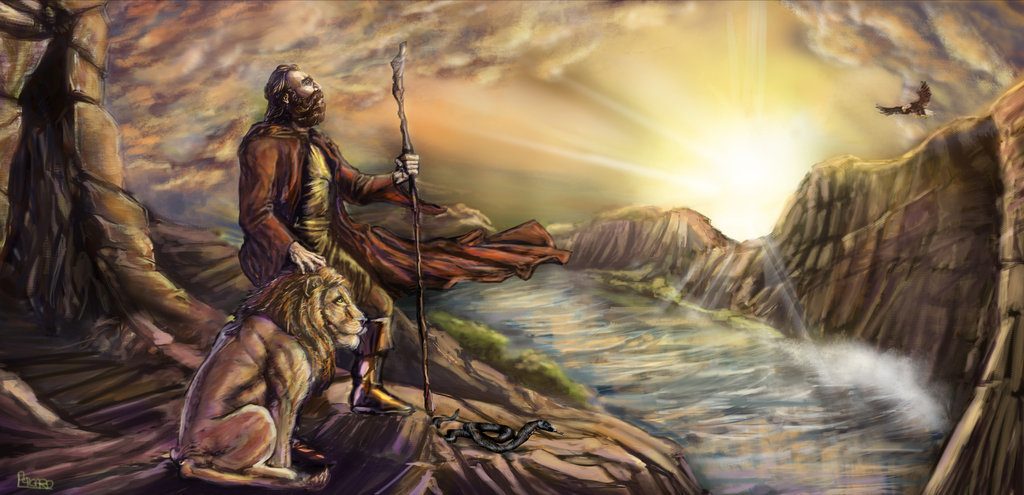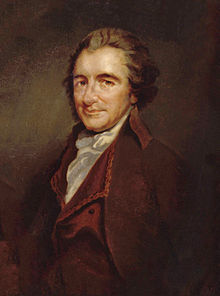Zoroastrianism was a dualist faith that originated in Persia, and over the years it has influenced a number of other faiths. Even though we may not recognize it today, it has been an influence on a number of world religions, especially on Christianity and Islam. Zoroastrianism is a belief system that stresses how we as human beings were meant to strive for our full potential. A primary tenet of the faith is that righteous and upstanding people will participate in the rewards of paradise, while the evil-doers will undergo punishments in hell.1
The prophet and founder of Zoroastrianism was Zarathustra, a man from an aristocratic family in Rhages, Media. Most scholars believe that Zarathustra was born around the late seventh and early sixth centuries B.C.E. He was a priest who became disillusioned with Persian ancestral religion, so instead he decided to search for inspiration and wisdom, and for a deeper meaning to life. After ten years of traveling, he finally realized that he had been called to be a prophet of Ahura Mazda, the Lord of Light. “He received a revelation in the form of the Avesta, the holy book of his religion, and commissioned to preach to humankind.”2 He would preach the Gathas; these were known as the hymns to the gods.
The central claim of Zoroastrianism is that there are two coequal and co-eternal gods: Ahura Mazda, the All-knowing Lord of Light, and Angra Mainyu or Ahriman, the Lord of Darkness. These gods represent an extreme dualism, where followers were given the option of choosing whom to worship. Ahura Mazda would save or condemn individuals based on whichever choice they decided to make.3 The people would experience rewards and punishments based on how they chose to behave. If they followed “Good words, Good thoughts, Good deeds,” they would be able to appreciate all the pleasures Ahura Mazda had in store for them in the afterlife.4

Devotees of Zoroastrianism believed that Ahura Mazda first produced the World of Thought and then gave birth to the World of the Living; but there was not yet life. Angra Mainyu challenged this pre-creation with his own counter-creation in order to destroy what Ahura Mazda was establishing. The Lord of Darkness wanted to demolish it with darkness, sickness, and death. Before Angra Mainyu was able to attack, Ahura Mazda forced him to recoil to the darkness. He was stunned into unconsciousness for three thousand years.5
Ahura Mazda then prepared for the Mixture of war, or battles against evil. This war was going to last six thousand years. For the first three thousand years, Ahura Mazda would unite with other lesser gods so that they could form a broad alliance. Angra Mainyu’s evil queen helped awaken the evil-doer and stirred all evil beings to attack Ahura Mazda. The battle then began, and Ahura Mazda’s creation came to life. Unfortunately, the very first beings killed were good, Gayomard and the Lone Bull; but from their semen they were able to manifest all humankind and bring into being all animals. Ahura Mazda’s right-hand man was Karsasp, a beautiful and innocent man, who helped fight off Angra Mainyu and his servants. Ahura Mazda then put Karsasp into a deep sleep so he would be well-rested for the very Last Battle.6 “At death, according to the tenets of Zoroastrianism, the souls of all persons ascend to the summit of Mount Hara where the good and bad of each soul are weighed in balances.”7 If one has made exceptional choices, ones soul will cross the cosmic bridge and continue an existence in heaven. In the case that many of one’s decisions were unacceptable, the bridge will disrupt and one’s soul will perish in hell. Scholar Charles David Isbell summarizes the eschatology of Zoroastrianism this way: “Since evil will have become extinct, history will come to an end, good souls will receive immortal bodies and will live forever in the re-perfected earth ruled over by Ahura-mazda.”8
This religion has continued to be practiced for as much as three thousand years. There are still a few thousand devotees that continue to carry on the traditions of Zoroastrianism in Iran and in India today. This religion has faced many difficulties in its long history, especially during the seventh century C.E. when invading Arab Muslims conquered the land of Persia, the homeland of Zoroastrianism. The conquerors chose not to take away this religion altogether, but they did choose to put a financial burden on the Zoroastrian temples.9 Many fled to India, which is home today to many of their descendants, known as Parsis. Many of those who stayed in Persia ended up converting to Islam. Although it may not be practiced as widely today, it has made a considerable impact on other religions.
Christianity was one of those religions that may have been influenced by elements within Zoroastrianism. Scholar John R. Hinnells writes,
It is generally held that the form of the later Jewish and Christian concept of the devil or Satan was influenced by Iranian tradition. If this be accepted then it has serious implications for the understanding of the saviour or Messianic figure…. When [the devil] becomes truly demonic … then the savior is given a new task.10
That task, Hinnells believes, was to defeat a supernatural and evil being, which taps into Zoroastrian dualism. In fact, the beliefs in a Satan of evil pitted against a God of good, the belief in angels and demons fighting a cosmic war, and the belief in a savior figure who would save all of humanity from evil and sin are all elements deriving from Zoroastrianism.11 Zoroastrianism in its original form may be an obscure faith in today’s society, but its impact on the fundamental principles of many religions is evident and deserves our appreciation and acknowledgement.
- Jerry Bentley, Herbert Ziegler, Heather Streets Salter, Traditions & Encounters: A Brief Global History Volume 1 (New York, NY: McGraw-Hill Publishers, 2016), 95-99. ↵
- Salem Press Biographical Encyclopedia, 2015, s.v. “Zoroaster,” by J. Steward Alverson. ↵
- Funk & Wagnalls New World Encyclopedia, 2016, s.v. “Ahura Mazda.” ↵
- Bentley, Ziegler, and Street Salter, Traditions & Encounters, 96-97. ↵
- P. Oktor Skjærvø, “Good vs. Evil,” Calliope 15, no. 5 (January 2005): 8. ↵
- P. Oktor Skjærvø, “Good vs. Evil,” Calliope 15, no. 5 (January 2005): 8. ↵
- Charles David Isbell, “Zoroastrianism and Biblical Religion,” Jewish Bible Quarterly (2006). ↵
- Charles David Isbell, “Zoroastrianism and Biblical Religion,” Jewish Bible Quarterly (2006). ↵
- Bentley, Ziegler, and Street Salter, Traditions & Encounters, 97-98. ↵
- John R. Hinnells, Zoroastrian and Parsi Studies: Selected Works of Johr R. Hinnells (Burlington, VT: Ashgate Publishing Co., 2000), 46. ↵
- Bryan Rennie, “Zoroastrianism: The Iranian Roots of Christianity,” The Council of Societies for the Study of Religion vol. 36 no. 1 (2007): 3-5. ↵



89 comments
Diego Terrazas
Zoroastrianism, I feel like, is a religion that is not credited enough for its influence on modern religions. However, I liked how Zoroastrianism was unique in a way that it it allowed people to choose the good or evil side. The dualism in this religion is fascinating. It reinforces the idea that good cannot exist without evil and vice versa.
Gabriel Dossey
This was a fascinating article that talked about the development of early religions. I was unfirmiliar with the concept however you did a good job explaining how Zoroastrianism was able to solidify the dichotomy of good and evil and then inspire other religions, llike christianity to accept such ideas.
Pamela Callahan
I have learned about Zoroastrianism in several of my classes in the past, but this article was still very interesting and I learned a lot more about the religion that I dine know before. The belief in the two gods that are equal in power: Ahura Mazda, the All-knowing Lord of Light, and Angra Mainyu, the Lord of Darkness reminded me of the yin and yang concept. This was a very well written article and it was very informative.
Daniela Duran
This was a really interesting article! The resemblance to many other religions is amazing! I had never heard about this religion before. I wonder if the people who still practice it today have similar traditions or religious acts as Christians or Islamic people. I liked how this religion defines “life” as the war between good and evil, because the only reason for which life came about in first place, was because Ahura Mazda wanted to defeat Angra Mainyu. In other words, this religion describes that life is the war between these two gods. I think this was a very interesting way of thinking about the daily battles we have with sin and the usual conformations of bad and good that humans experience. In some sense, life is indeed about a fight between evil and good.
Raymond Munoz
Zoroastrianism is a truly astonishing religion in the fact of its influence and it’s continued existence. This article does a great job at highlighting the major aspects of Zoroastrianism that may be present in today’s most popular religions. Understanding these aspects should be important to all religions because knowledge is power, power to improve ourselves. Again, I do think it is impressive that the religion is still practiced today, but to me it is more important that we know of its influence.
Micaela Cruz
The ideas of Zoroastrianism are incredibly interesting; I had never heard nor learned anything about this particular religion before. I found this article to be very informative and how it relates closely to Christianity. I see how this religion could have been an influence to Christianity because of how in Zoroastrianism, there is a Lord of Light as well as a Lord of Darkness and in the Christian religions, we believe that God is our light and that the Devil is darkness. A very well-written article.
Ysenia Rodriguez
It’s astonishing that this ancient religion of Zoroastrianism–one I cannot recall ever hearing or being mentioned throughout history–impacted many of the world’s largest religious groups today. As the story describes the war between Good (Ahura Mazda) and Evil (Angra Mainyu), the relationship between Zoroastrianism and Christianity becomes increasing clear. Not only does this concept of good versus evil (light versus darkness) follow throughout religious perspectives but it also faintly reminds my of movies where you have a protagonist and his/her group of heroes and then the antagonist and his/her group of villains.
Andrea Cabrera
In ancient Greek and Roman beliefs, the gods were presented as supernatural beings pretty like human behaviors. I find it mind-boggling that Zoroastrianism influenced the two biggest current religions in the world. The whole concept is very interesting in how it influenced many different religions. The battle between good and evil have shaped most morality views in cultures and religions. This article was well researched and developed.
Esperanza Rojas
I absolutely love the concept of this religion and how it made the impact on many others. I became interested in this topic as soon as we learned about it in class. I do like the fact the article discusses how the God, Ahura Mazda, fought with Angra Mainyu, and how the war came to be, rather than the evolution of the religion itself. It was fascinating to read because the entire time I was comparing this to Christianity and realised that many religions followed the “heaven” and “hell” concept.
Steven Hale
I can certainly see how the dualism in Zoroastrianism is reflected in religions like Christianity that see God as perfect. Growing up with some exposure to Christianity, it is easy to assume that all religions see their deity or deities this way, but in ancient Greek and Roman beliefs, the gods were presented as supernatural beings with the same moral structure as humans.